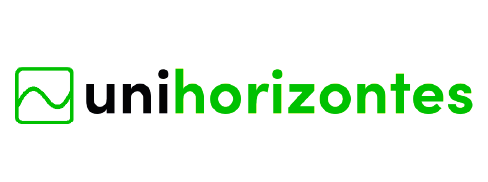Autor: Gisele Ferreira Pinto Siqueira
Tipo de Trabalho de Conclusão: DISSERTAÇÃO
Data da Defesa: 15/02/2018
Resumo: O objetivo deste estudo foi descrever e explicar o estresse ocupacional (EO) dos analistas administrativos e assistenciais que atuam em um hospital público universitário da cidade de Belo Horizonte/MG. A teoria ancorou-se no modelo explicativo do estresse ocupacional (MTEG), desenvolvido e validado por Zille (2005), adaptado para este estudo. Para responder ao problema de pesquisa sobre as manifestações relacionadas ao estresse no trabalho, realizou-se uma pesquisa descritiva e explicativa de abordagem quantitativa, por meio de estudo de caso. Para a coleta de dados, aplicou-se questionário aderente ao MTEG. A pesquisa foi censitária, contemplando 151 analistas. A análise dos dados se deu com base na estatística multivariada. Em relação aos resultados, apurou-se que 69,5% dos respondentes apresentaram quadros de estresse, variando de leve/moderado a muito intenso. As principais fontes de tensão no trabalho (FTT) foram: cobrança por fazer mais com o mínimo de recursos, realizar várias atividades ao mesmo tempo com alto grau de cobrança e execução de trabalho complexo, desgastante e cansativo. As fontes de tensão no indivíduo (FTI) foram: levar a vida de forma muito corrida, ter o dia tomado por uma série de compromissos e não conseguir desligar-se do trabalho, mesmo fora dele. Os principais sintomas foram: fadiga, ansiedade, nervosismo e dor nos músculos do pescoço e ombros. Os indicadores de impactos no trabalho (IMPACTOS), mais relevantes foram: levar a vida de forma muito corrida, pensar e/ou realizar duas ou mais atividades ao mesmo tempo e ter o dia tomado por uma série de compromissos. Os mecanismos de regulação (MECREG) mais utilizados foram: experiência pessoal na solução de dificuldades no trabalho, descansar de forma regular nos feriados e finais de semana e tempo para relaxar/descansar. Para testar o modelo hipotético 1 – em que iindivíduos que apresentam fontes de tensão no trabalho e fontes de tensão do indivíduo mais elevadas e mecanismos de regulação mais baixos possuem maior incidência de estresse ocupacional – e o modelo 2 – em que indivíduos que apresentam maiores níveis de estresse possuem, em média, maiores escores de indicadores de impacto no trabalho –, foram realizadas análises de regressão múltipla para o primeiro caso e de regressão simples para o segundo. Para a hipótese 1, apurou-se que incrementos em FTT e FTI produzem aumento no EO e que aumento na utilização de MECREG produz diminuição no EO e para a hipótese 2, que o EO impacta os níveis de indicadores no trabalho; portanto, a cada aumento no estresse ocupacional, os indicadores de impacto no trabalho também aumentam.
Palavras-chave: Estresse ocupacional. Estresse no trabalho. Empresa pública de gestão hospitalar. Analistas administrativos e assistenciais. Instituição hospitalar.
Abstract: The objective of this study was to describe and explain the occupational stress (EO) of administrative and care analysts who work in a university public hospital in the city of Belo Horizonte / MG. The theory was anchored in the explanatory model of occupational stress (MTEG), developed and validated by Zille (2005), adapted for this study. In order to respond to the problem of research on manifestations related to stress at work, a descriptive and explanatory research of a quantitative approach was carried out through a case study. For the data collection, a questionnaire adhering to the MTEG was applied. The survey was census-based, with 151 analysts. Data analysis was based on multivariate statistics. Regarding the results, it was found that 69.5% of respondents presented stress pictures, varying from mild to moderate to very intense. The main sources of tension at work (FTT) were: charging for doing more with the minimum of resources, performing several activities at the same time with a high degree of billing and performing complex, exhausting and tiring work. The sources of tension in the individual (FTI) were: to lead life in a very rush, to have the day taken by a series of commitments and not to be able to disconnect from work, even outside it. The main symptoms were: fatigue, anxiety, nervousness and pain in the muscles of the neck and shoulders. The most relevant indicators of impact on the work (IMPACTS) were: to lead a very busy life, to think and / or to carry out two or more activities at the same time and to have the day taken by a series of commitments. The most used mechanisms of regulation (MECREG) were: personal experience in solving difficulties at work, rest regularly on holidays and weekends, and time to relax / rest. To test the hypothetical model 1 – in which individuals who present higher sources of stress at work and sources of tension and lower regulatory mechanisms have a higher incidence of occupational stress – and model 2 – in which individuals with higher levels of stress have, on average, higher scores on work impact indicators – multiple regression analyzes were performed for the first case and simple regression for the second. For hypothesis 1, it was found that increases in FTT and FTI produce an increase in EO and that an increase in the use of MECREG produces a decrease in EO and for hypothesis 2, that EO impacts the levels of indicators in the work; therefore, with each increase in occupational stress, the indicators of impact at work also increase.
Keywords: Occupational stress. Stress at work. Hospital management public company. Administrative and care analysts. Hospital institution.
Área de Concentração: ORGANIZAÇÃO E ESTRATÉGIA
Linha de Pesquisa: Relações de Poder e Dinamica das Organizações
Banca Examinadora
Orientador: Prof. Dr. Luciano Zille Pereira
Prof. Dr. Marco Aurélio Ramos – Docente
Profª Drª Carolina Maria Mota Santos – Participante Externo
Baixar arquivo: http://mestrado.unihorizontes.br/wp-content/uploads/2022/09/GISELE-FERREIRA-PINTO-SIQUEIRA.pdf
